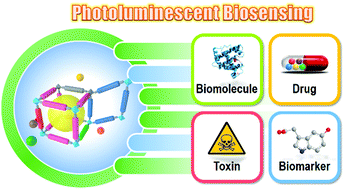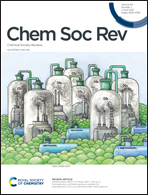Metal–organic frameworks as photoluminescent biosensing platforms: mechanisms and applications
Abstract
Biosensing is of vital importance for advancing public health through monitoring abnormalities in biological systems, which may be potentially associated with certain body dysfunctions. A wide range of luminescent materials have been actively pursued in the fabrication of biosensing platforms, particularly ones that can function in complex biological fluids with high selectivity and sensitivity. Recently, metal–organic frameworks (MOFs) have experienced rapid growth due to their tunable structures, large surface area, and being prone to surface engineering, etc. These virtues endow MOF materials with immense feasibility in the target-oriented construction of sensing platforms for specific applications. In this review, we extrapolated six sensing mechanisms for MOF-based photoluminescent biosensing platforms, including photoelectron transfer (PET), resonance energy transfer (RET), competition absorption (CA), structural transformation (ST), chemical conversion (CC), and quencher detachment (QD). Accordingly, recent progress of MOF-based materials in photoluminescence sensing of biomolecules, biomarkers, drugs, and toxins was highlighted. The objective of this review is to provide readers with an extensive overview of the design and synthesis of MOF materials for photoluminescence biosensing. The challenges and outlook are briefly discussed at the end.



 Please wait while we load your content...
Please wait while we load your content...